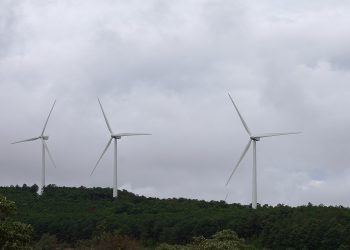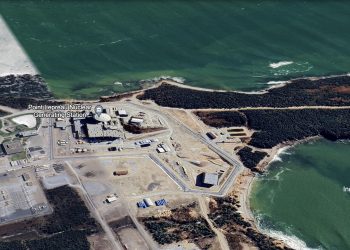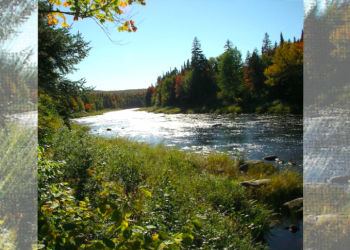The Higgs government has stated its intention of “modernizing the local governance system” in New Brunswick, but its reform proposals have little to say about collaborative management of forests and water.
When it comes to local governance reform, the Higgs government took a page from the Brian Gallant Liberal government by embracing the notion that you get the change you desire by ultimatum and coercion.
The Gallant government forced First Nation governance into submission by threatening financial ruin if they did not agree to the government’s terms regarding the Sisson mine project. Similarly, Higgs’ autocratic tendencies have formed the approach to reform by imposing ‘efficiency’ priorities upon an ill-informed and COVID-distracted electorate.
For many New Brunswickers, local governance reform could have been an exciting and celebratory process. However, the government’s biased public surveys, multitudes of technological challenges, and mixed messaging have reinforced public distrust of the reform process.
Intentional or not, this approach has formed an adversarial cloud that will hang over the process as it moves forward. Minister of Local Government Daniel Allain has subtly chastised New Brunswickers for being resistant to change, and has seemingly scolded the rural electorate for being stuck in an outmoded governance model.
But who is really resisting change in this push for a more modern paradigm of local governance in New Brunswick? This question is answered by looking at the government’s conduct related to its foundational reform Pillar 3, Land Use Planning. In its Green Paper on Local Government Reform, the government proclaims:
“Land use planning is fundamental to creating sustainable and vibrant communities as it determines the use of land, resources, infrastructure and services to influence the physical, economic and social development of a community.”
Examples of government posturing on this issue can be found in forestry, water protection, mineral rights legislation, and in the government’s lack of adherence to Indigenous treaties – all have found successive governments of this century desperately clinging to outdated policies, to the point of ignoring and violating their own laws, constitutional law and United Nations proclamations.
In forestry, communities in recent years have attempted to influence “land use planning” through community-based forestry, only to be foiled by government inflexibility.
There are at least two recent examples. In August 2000, citizens within the St. Croix watershed proposed community-based management of 60,000 hectares of previously abandoned Georgia-Pacific Forest Lands. The citizen stakeholders methodically prepared a professional, well articulated, and detailed forest management plan (1). The government perfunctorily refused to accept it.
In 2008, the Rural Community of Upper Miramichi in partnership with the Conservation Council of New Brunswick discussed visions of what a community forest could deliver to the recently amalgamated Boisetown and surrounding communities, an area hit hard by mill closures and in need of jobs (2). However, the alliance was met with a lack of political will to move the initiative forward.
“Upper Miramichi residents were inspired by British Columbia’s successes with community forests,” says Tracy Glynn, the Conservation Council’s forest campaigner at the time of the initiative.
“The Upper Miramichi experience demonstrates the importance of having a province that is willing to facilitate community-based management of resources. It’s more democratic and allows people to protect what they love about their home. In the Upper Miramichi case, they considered what a timber allocation could give the community, but they also dreamed about how to better support fiddlehead harvesters and wood artisans. At the time, they were saying no to shale gas companies in their backyard and they were thinking about how eco-tourism could protect their forest and Miramichi River,” recounted Glynn.
Given this history of government suppression of local management over “land use planning” and given the Higgs government pattern of bowing to industrial forestry dominance and interests, what faith can the public have that there will be a new paradigm of “land use planning” under the current proposals for local governance reform?
With regard to freshwater resources and “land use planning” what may be the most profound example of government hypocrisy is related to Water Classification.
The Water Classification Regulation 2002-13 of the Clean Water Act was passed into law in 2002. Under the legislation, watersheds were empowered to plan and designate the level of protection afforded streams within their domain. Much volunteer work and provincial Environmental Trust Fund money went into collecting the data to substantiate the protections to be installed.
Under the regulation, proposals for a use prohibited under a stream’s Class designation required citizen and ministerial approval for the proposed use. This power to influence the management of waters subsequently has proven too intimidating for five generations of Progressive Conservative and Liberal governments, all of whom have refused to honor the letter and intent of the regulation.
Government failure on the classification issue was highlighted in a scathing report by New Brunswick’s Ombudsman in 2014 (3). Unfortunately, nothing has changed, Regulation 2002-13 is still the law, and government continues to ignore the law. The public can start to believe that the government is serious about considering and empowering the citizenry to help shape Local Governance Reform when it starts adhering to the Water Classification Regulation.
From recent history of rural municipality formation, it can be expected that new proposals for rural communities will continue to involve large tracts of land and waterways, for which communities will be expected to provide maintenance, but for which communities will have virtually no power to influence planning, management or revenue sharing.
What residents understand, but what has been a topic avoided by the reform process thus far, is the necessity for symbiotic reform within, for example, the portfolios of Natural Resources, Environment, Transportation, Health, and Justice.
Thus far within reform consultations and reporting, there has been no evidence of transparent financial, environmental, economic or social accounting. Public understanding of current and proposed local governance systems is still missing, especially related to the differences between service delivery and governance. The populace has no clear appreciation of what their responsibilities might be within a reformed governance system.
However, it is not too late. Reform has a chance to gain social license. With a pause for the government and bureaucracy to reframe using holistic thinking, inject transparent accounting, and work to build local governance literacy, reform can be the success all New Brunswickers require.
Too many questions remain unanswered. It is inconceivable that the public can intelligently decide whether to accept or reject a new form of governance if the government refuses to accept to do its part in the reform.
1. Herron, J., 2000. St. Croix Community Forest Management Plan. Proposal presented to the Department of Natural Resources. NB Legislature. Fredericton.
2. Glynn, T. 2017. Community Forestry on the Cusp of Reality in New Brunswick. Growing Community Forests: Practice, Research, and Advocacy in Canada, pp. 139-146.
3. NB Ombudsman. 2014. Report of the Ombudsman into the Department of Environment’s Management of the Provincial Water Classification Program. Published by: Office of the Ombudsman. Government of New Brunswick. Fredericton, NB E3B 5H1.
Kim Reeder, living on unceded territory of the Peskotomuhkati, is a senior policy advisor with the RAVEN project at the University of New Brunswick, and is involved in many rural community initiatives.






![Is pollution from industry causing the neurological disease ALS in New Brunswick? [video]](https://nbmediacoop.org/wp-content/uploads/2025/10/Quintin-Soloviev-Belledune_Generating_Station_in_New_Brunswick_Canada-120x86.jpg)



